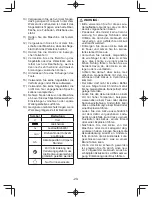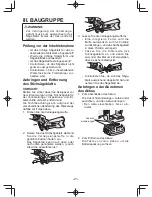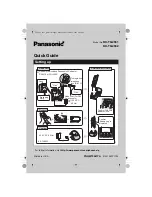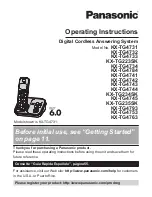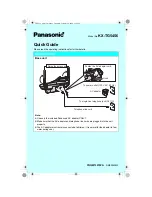
-12-
CAUTION
• Keep the protective shoe in contact
with the material being cut while op-
erating the tool.
• Failure to do so may cause the re-
ciprocating saw blade to be dam-
aged due to the resulting vibrations.
• When cutting in a small arc, a lower
feed speed will result.
Control Panel
(1)
(2)
(1) Battery low warning lamp
Off
(normal
operation)
Flashing
(No charge)
Battery protection
feature active
Excessive (complete) discharging of
lithium ion batteries shortens their service
life dramatically. The tool includes a
battery protection feature designed to
prevent excessive discharging of the
battery pack.
• The battery protection feature acti-
vates immediately before the battery
loses its charge, causing the battery
low warning lamp to flash.
• If you notice the battery low warning
lamp flashing, charge the battery pack
immediately.
• If it is started with too little battery
power remaining, the tool may stop
operating without the battery low
warning lamp flashing first. This in-
dicates that there is too little battery
power remaining to use the tool, and
the battery pack should be charged
before further use.
• If the tool is subject to a sudden load
during use that causes the motor to
lock up, the overdischarge prevention
sensor may be triggered, and the bat-
tery low warning lamp may flash. The
lamp will stop flashing once you ad-
dress the cause of the motor’s locking
up and cycle the trigger.
(2) Overheat warning lamp
Off
(normal
operation)
Flashing: Overheat
Indicates operation has
been halted due to
battery overheating.
To protect the motor or battery, be sure
to note the following when carrying out
this operation.
• If the motor or battery becomes hot,
the protection function will be acti-
vated and the motor or battery will
stop operating. The overheat warning
lamp on the control panel illuminates
or flashes when this feature is active.
• If the overheating protection feature
activates, allow the tool to cool thor-
oughly (at least 30 minutes). The tool
is ready for use when the overheat
warning lamp goes out.
• Avoid using the tool in a way that
causes the overheating protection fea-
ture to activate repeatedly.
• If the tool is operated continuously un-
der high-load conditions or if it is used
in hot-temperature conditions (such as
during summer), the overheating pro-
tection feature may activate frequently.
• If the tool is used in cold-temperature
conditions (such as during winter) or if
it is frequently stopped during use, the
overheating protection feature may
not activate.
• The performance of the EY9L42 de-
teriorates significantly at and below
10°C due to work conditions and oth-
er factors.




















